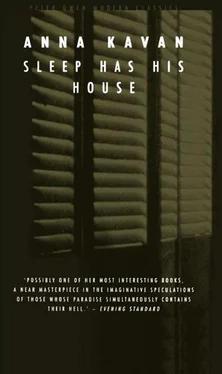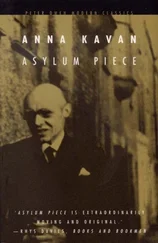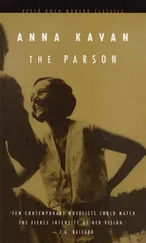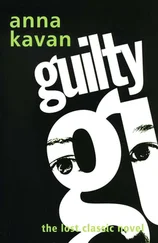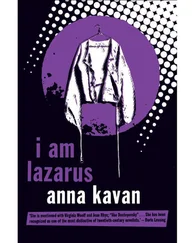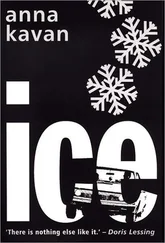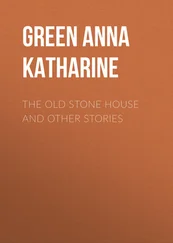The door shuts on this and opens again, slowly, under the same ringed hand which we have seen already. A enters the same room; the only change is that now the sun is setting. Red sunset light fills the room so that it seems to be floating inside a druggist’s beaker of coloured water. Red in this sunset danger-light, her head held back tensely, the neck muscles tensing, the fragile exposed curve of the vulnerable white neck, taut, a vulnerable flower-stalk in the red room. With quick red springing wide and away from the neck, a vaporous darkening within the room, the silver suddenly blackened, the window rusted. The left hand leaps to the throat, convulsing, and flashing its dulled ring. Red sprays and stipples the bedspread with the delicacy of fine rain. Red cascades mistily from the open drawers of the tallboy, gingerly spreading fanwise over the whole floor, creeping towards the door
which opens and closes softly and carefully under A’s hand as she goes out.
She closes the door with abstracted and almost tender attention, walking slowly away. It’s a narrow gallery that she steps out into, a gallery running round three sides of a hall. Everything is very dark, the only light comes from an antique lantern down in the body of the hall which grudgingly emits a dusty glimmer through its horn windows. The gallery is in deepest shade. The panelling, the row of shut doors, are really nothing but guess-work. The hall roof is as high as a church, it wouldn’t be out of place to see bats flitting about, or an owl roosting up on one of the rafters. The main part of the hall, down where the light is, presents a queer conflict between the florid and the austere. The bare lofty walls, the grim perspectives of shadow, the uncurtained and ecclesiastically shaped windows, have a severe monastic look. But this asceticism doesn’t agree at all with the arsenic-green carpet, or with the sumptuous thronelike chair, glowing with scarlet silk under the lantern. The two colours, the arsenical carpet, the scarlet chair, the only visible colours, bum with the suppressed, dangerous intensity, the theatrical violence, with which occasional colours are over-emphasized in the usually neutral-tinted dream scene. There is a chemical suggestion about these tints, reminiscent of fires examined through smoked glass. One feels that they are too strong to be faced without some sort of screen.
A man is sitting in the chair, closely occupied with papers which he can barely see to read. Papers are stacked on a small table beside him: papers are in his hands, on his knees. Because of the position in which he is sitting, bent over his work, it’s quite impossible to distinguish clearly anything about him. (But it’s a pretty safe bet that he’s the man who on a previous dream occasion was too busy to notice that his daughter wanted to ask him for his support.)
The general effect produced by all this is sinister and at the same time slightly phony. What really introduces the sinister element is that the dramatic trappings are somehow unconvincing. The massive walls might quite possibly be made of paper, the whole place might taper off into a flimsy tangle of wires and screens just out of eyeshot. And yet nothing positively suggests this. It’s simply the ominous dream-feeling that appearances may suddenly slip out of themselves into something entirely different.
Visual reality might here be only a mask held in front of the face of some much more frightening reality in another dimension.
And this applies too in some way to A who, wrapped in a long dark garment, slowly starts to walk down the stairs. She is aware of the man sitting near the lamp without being disturbed by his presence. She walks quietly, but without making any special effort to avoid his notice; anyway, he is too far off to hear her. He is much farther away than he could possibly be. Glancing at him, her face is depersonalized, the face of someone seen in a photograph. When she gets to the foot of the stairs, coming into the lamp’s radius, the shadows of the bannisters fall on her in successively widening strokes, like the flails of a threshing machine. At the foot of the stairs she stands still. She now has to embark on the arsenic sea, incandescent with mineral fires. It’s a hard step for her to take. (Why are these endings called acts of weakness?) She stands on the last stair, her hand on the carved newel-post.
She puts one foot in front of her. As her foot touches the carpet, the newel-post, very abnormally tall and massive, rears up behind her like a black tree. In an instantaneous flash-back of association comes the vaguely disturbing sensation of déjà-vue —Has this happened already… where…?
A takes a step forward; then another. She goes on to a door at the left of the lantern: that it is an outer door is shown by its numerous heavy fastenings; but the bolts are not bolted, the iron chain is hanging unhooked.
(For a fractional moment, far off in the sea of universal identity, the slave, broken by torture, gravely and quietly speaking his antique wisdom: Is there smoke in the room? If only a little I will remain; but if it is a very great smoke I will go out. For that door is always open. Slow smoke rising solemn and funnel-shaped, as from a censer, conceals him, drifts him away.)
A has only to turn the handle in order to go out. As she proceeds to do this, there is a perceptible increase in tension. She is set on holding herself aloof and dedicated to her purpose. She seems now definitely not to wish to attract the notice of the man sitting near. Nevertheless, there is a moment, just before she turns the handle, when something forces her to look at him, she even seems to make an unspoken appeal, though cynically without hope, as if to the indifferent and insensitive masses who understand nothing, see nothing. He, not absolutely unconscious, shuffles his documents, moves his feet on the carpet, roughening the bright pile. As tension accumulates, he looks up with a reluctant, resentful, only incipiently-aware expression. Does he hear something unusual? Is it raining outside? Has the wind got up suddenly? He doesn’t see A. He would have to turn his head right over his shoulder to get her into his field of vision. For a few seconds he is restless, more irritated by the interference with his concentration than anything else. Soon he brushes the whole intangible interruption aside and goes on reading.
A slowly turns the door handle. And this door too she shuts very carefully and quietly behind her as she goes out into the garden of THE ELMS, where the gardener is cutting the edge of the grass with a pair of long-handled shears. She stands on the lawn quite close to him, watching the snipped grass blades fall on the gravel. She has the air of wishing to know with some part of her attention just how the shears are manipulated: but from this fractional escape her real ego stands always dissociated. The gardener does not look up. He wears an old soft-brimmed straw hat, his back is stiff, his head bent, the snicking rhythm of the shears does not hesitate.
While he stolidly goes on clipping, a car pulls up in front of the porch, the chauffeur gets out and rings the bell, the suburban lady steps down from the car, the maid comes to open the door of the house. These four people, the visitor, the gardener, the chauffeur, the maid, each wearing a similar mask-face under straw hat, hat with bird in it, peaked cap, muslin cap, are grouped together a few yards from A. The tableau holds in suspense while all the masks slowly swing towards A and remain fixed. Fright starting to appear on her face, A looks from one to the other, turns round, hurries away. As she goes out of the gate, the branches of the elms at each side reach out fumbling at her, their long arms fingered with groping leaves. A leaf falls: she begins running; others fall. Magnified, not in size but in prominence, dead leaves eddy to-and-fro on the ground, cluster in dusty drifts, scamper singly away.
Читать дальше
